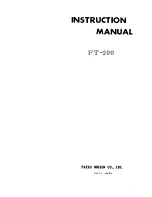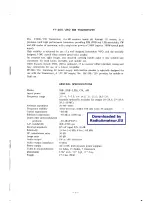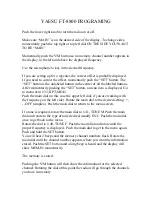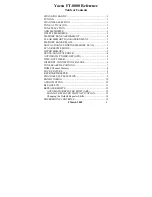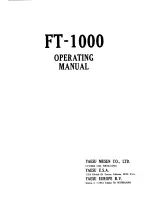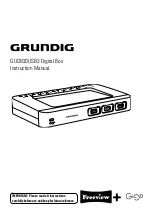
FSG 70/FSG 71M
O
PERATION
M
ANUAL
Page
3 - 14
Reprint July 1998
W. Dittel GmbH
3.5
Post Installation Check
3.5.1
Testing on the Ground with the Engine Off
After installing the unit, check all aircraft control movements to be sure no electrical
cables interfere with their operation.
Then measure the antenna matching between the RF jack of the unit and the antenna
cable. A VHF standing wave meter or an in-line type directional wattmeter is required
for this measurement.
The standing wave ratio should be less than 3:1 throughout the entire frequency range
of the unit (reflected power
≤
25% of the input power). If this value is exceeded, a
strong mismatch exists which, for example, may be caused by an incorrect or
insufficient ground plane, poor contacts or incorrect radiator length. For higher range
we recommend a standing wave ratio of max. 2:1 (reflected power
≤
11% of the input
power).
After antenna measurement a signal check with the ground station is performed.
IMPORTANT!
•
With belly-mounted COM antenna, this measurement must be
performed during flight in order to prevent incorrect measurements.
3.5.2
Testing on the Ground with Engine Running
With the engine running, it must be ensured that the aircraft's electrical system voltage
lies within the tolerances permitted at 14 or 28 V, as applicable; this measurement is to
be made with the engine operating at cruising RPM.
When carrying out a subsequent signal check, the ground station must be at a
distance of approx. one to five km. At engine cruising RPM, aircraft cabin noise should
be avoided to be picked up by holding the microphone near the lips in order to provide
a much more desired signal than cabin noise. If possible, verify the communications
capability on both the high and low end of the VHF COM band.
If noise occurs only with the engine running and its frequency varies with the engine
speed, it may be caused by an inadequately suppressed ignition system or
alternator/voltage regulator equipment, or by a poorly stabilized on-board supply
voltage. According RTCA 160-A the limits for ripple voltages in 14Vdc supplies are
0.79 V
pp
at 0.2
-
1 kHz, 1.98 V
pp
at 1 - 15 kHz. For 28Vdc supplies: double limits. It is
easier to distinguish between RF and AF interference (carried by the lines) by
removing the antenna plug at the transceiver; RF interference, which usually comes
from the ignition or generating system, disappears. Supply ripple can be found with an
oscilloscope. Its source is usually the generator equipment in conjunction with a poor
battery or poor wiring (bad contacts, defective switches, inadequate wire cross
sections, ground loops). Bad contacts in the antenna system are also responsible for
heavily distorted communication.























